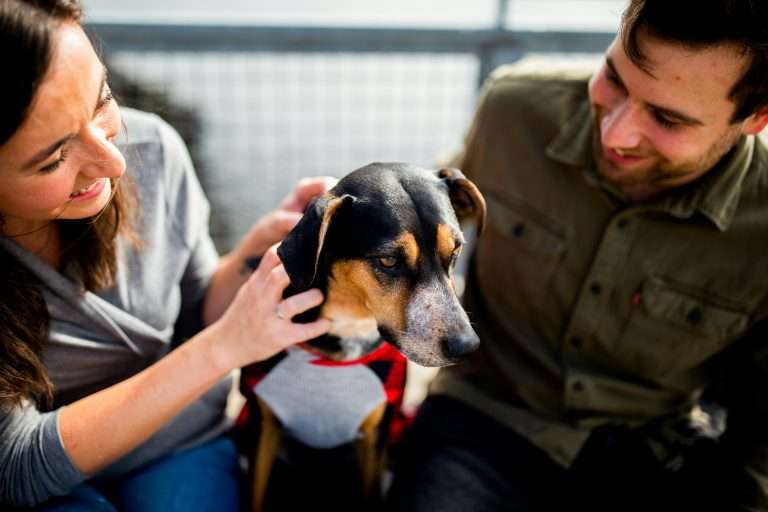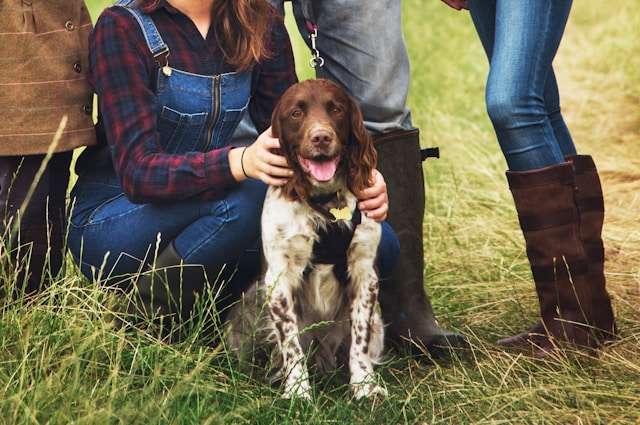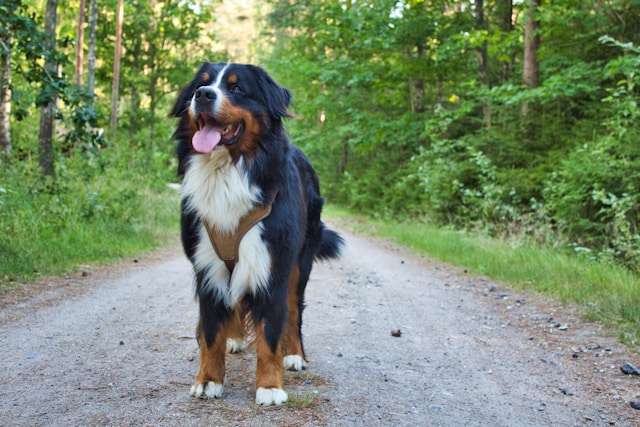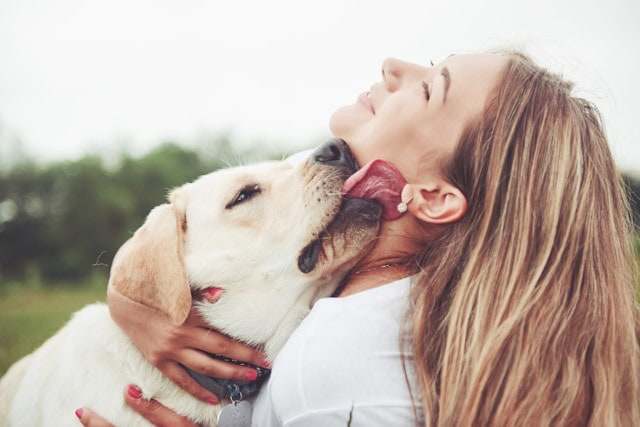Dog Breeds: Top 10 Most Popular Choices for Families

Dogs have captured the hearts of humans for millennia, evolving from wild canines into the diverse array of dog breeds we know today. With over 300 recognized breeds worldwide, each possesses unique characteristics, temperaments, and physical attributes. Dog breeds range from tiny Chihuahuas to massive Great Danes, showcasing the incredible variety within the canine world.
Table of Contents
Human needs and preferences have shaped the development of distinct dog breeds. From working dogs bred for specific tasks to companion animals selected for their appearance or personality traits, the history of dog breeding is intertwined with human culture and society.
Understanding different dog breeds can help potential owners make informed decisions when choosing a canine companion. Factors such as size, energy level, grooming needs, and temperament vary widely among breeds, making it essential to research and consider lifestyle compatibility before bringing a new dog into the family.
Key Takeaways
- Dog breeds exhibit diverse physical and behavioral traits suited for various purposes.
- Breed characteristics can significantly impact a dog’s care requirements and suitability for different lifestyles.
- Responsible ownership involves understanding breed-specific needs and providing appropriate care and training.
History and Evolution of Dog Breeds
Dogs were first domesticated from wolves around 23,000 years ago in Siberia. This marked the beginning of a long journey of canine evolution and diversification.
Early dogs served various roles, including hunting, herding, and protection. As human societies developed, so did the need for specialized canine companions.
The 19th century saw a surge in deliberate breeding practices. This era gave rise to many of the dog breeds we recognize today.
Kennel clubs emerged to establish breed standards and maintain pedigrees. The first official dog show took place in 1859 in Newcastle-upon-Tyne, England.
Modern DNA analysis has revealed fascinating insights into canine ancestry. Some breeds, like the Peruvian hairless dog and Xoloitzcuintle, trace their lineage back to ancient times.
In 2022, there were over 340 recognized dog breeds worldwide. Each breed has unique characteristics shaped by geography, function, and human preference.
Famous Dog Breeds (2022):
Landrace dogs, bred without strict standards, maintain greater genetic diversity. Examples include the Welsh Sheepdog and Indian pariah dog.
Today, breeding focuses on health, temperament, and specific traits. Responsible breeders work to eliminate genetic disorders and improve overall canine well-being.
The Role of Registries and Breed Standards
Registries and breed standards play a crucial role in maintaining the integrity and consistency of dog breeds. They provide guidelines for breeders and judges and ensure that dogs conform to specific physical and behavioral characteristics.
American Kennel Club
The American Kennel Club (AKC) is the preeminent registry for purebred dogs in the United States. Founded in 1884, it recognizes over 200 breeds and maintains detailed breed standards.
The AKC’s standards describe each breed’s ideal physical traits, temperament, and movement. These guidelines help breeders produce dogs that exemplify their breed’s characteristics.
AKC registration provides dogs with pedigrees, documenting their lineage. This information is valuable for breeders and owners interested in their dog’s heritage.
Purebred Dog Registry
Purebred dog registries maintain records of a breed’s lineage and genetic history. They play a vital role in preserving breed standards and genetic diversity.
These registries often offer different types of records:
- Foundation Registry: For establishing new breeds
- Studbook Registry: Documenting breeding lineages
- Merit Registry: Recognizing exceptional dogs within a breed
Registries help breeders make informed decisions about mating pairs, reducing the risk of genetic health issues in offspring.
Inspections and Compliance
Many registries conduct inspections and enforce compliance measures to maintain the integrity of breed standards. The AKC, for example, performs kennel inspections to ensure proper care and breeding practices.
Inspectors evaluate:
- Living conditions
- Health and welfare of dogs
- Breeding practices
- Record-keeping
Non-compliance can result in penalties, including suspension of breeding privileges or revocation of registration. These measures help maintain the quality and health of purebred dogs.
Registries also investigate complaints and allegations of misconduct to uphold ethical breeding standards.
Breed Classifications and Groups
The American Kennel Club organizes dog breeds into seven groups based on their original purposes and characteristics. These classifications help potential owners understand the traits and needs of different breeds.
Working Dogs
Working dogs were bred for specific jobs, such as guarding property, pulling sleds, and performing water rescues. This group’s breed includes bulldogs, Siberian huskies, and Bernese mountain dogs. They are known for their strength, intelligence, and loyalty.
Working dogs often require extensive training and exercise. Their size and power make them best suited for experienced owners with ample space. Many working breeds excel in obedience, agility, and protection sports.
These dogs thrive when given tasks to complete. Without proper stimulation, they may become bored and destructive. Regular mental and physical challenges are essential for their well-being.
Herding Dogs
Herding dogs were developed to assist farmers and ranchers in managing livestock. Popular breeds include Border Collies and Australian shepherds. These intelligent and energetic dogs possess a strong instinct to control the movement of other animals.
Herding breeds are highly trainable and excel in various dog sports. They form strong bonds with their families and are often protective. Many herding dogs require extensive exercise and mental stimulation to prevent boredom.
Without a flock to manage, these breeds may attempt to herd children, other pets, or even moving objects. Early socialization and training are crucial to channel their instincts appropriately.
Hunting Dogs
Hunting dogs encompass a variety of breeds developed to assist hunters in finding, flushing, and retrieving game. This group includes popular breeds like Labrador Retrievers and Golden Retrievers. Hunting dogs are further divided into retrievers, spaniels, and setters subgroups.
These breeds are known for their keen senses, trainability, and endurance. Many hunting dogs have a strong prey drive and may chase small animals. They typically require plenty of exercise and mental stimulation.
Hunting breeds often make excellent family pets due to their friendly nature and adaptability. However, their high energy levels and need for activity should be considered by potential owners.
Toy and Companion Breeds
Toy and companion breeds were developed primarily for human companionship. These small dogs include breeds like the Affenpinscher, Cavalier King Charles Spaniel, and Maltese. They are known for their affectionate nature and adaptability to various living situations.
Toy breeds are often lap dogs, content to cuddle with their owners. Many have lower exercise requirements than larger breeds, making them suitable for apartment living. However, they still need regular walks and playtime.
Due to their size, these small dogs can be prone to specific health issues. They may also be more delicate and require careful handling, especially around young children. Despite their small stature, many toy breeds have prominent personalities and make loyal, devoted companions.
Famous Dog Breeds and Their Unique Traits
Dog breeds vary widely in popularity, size, appearance, and temperament. Some breeds consistently top popularity charts due to their friendly nature and adaptability, while others are prized for specific traits like loyalty or guarding abilities.
Most Popular Breeds
The American Kennel Club (AKC) recognizes 197 breeds, but certain breeds consistently rank among the most popular. The French Bulldog, known for its compact size and charming personality, has recently claimed the top spot.
Labrador Retrievers and Golden Retrievers remain favorites due to their friendly nature and versatility. German Shepherds are highly regarded for their intelligence and loyalty, often in working roles.
Other popular breeds include:
Due to their varying sizes and temperaments, these breeds appeal to many dog owners, from families to singles.
Breed-Specific Temperaments
Different dog breeds exhibit distinct temperaments, significantly influencing their suitability for various lifestyles. Golden Retrievers are known for their gentle and friendly nature, making them excellent family pets.
German Shepherds display strong loyalty and protective instincts, often excelling in guarding roles. French Bulldogs are typically playful and adaptable, suiting active and more relaxed owners.
Some breeds, like the Beagle, have high energy levels and require more exercise. Others, such as the Bulldog, tend to be more laid-back and less demanding regarding physical activity.
Potential dog owners must research breed-specific temperaments to ensure a good match with their lifestyle and expectations. Proper training and socialization can also help shape a dog’s behavior, regardless of breed.
Breed-Specific Health and Care
Different dog breeds have unique health considerations and care requirements. Understanding these breed-specific needs is crucial for optimal care and ensuring your canine companion’s long, healthy life.
Canine Health Research
Breed-specific websites offer valuable information on potential health issues for particular dog breeds. These resources compile veterinary studies and genetic research data to identify common health problems in specific breeds.
Researchers use DNA testing to uncover genetic predispositions to certain diseases. This information helps veterinarians tailor preventive care plans for individual dogs.
Some breeds are more prone to specific health issues. For example, large breeds often face a higher risk of hip dysplasia, while brachycephalic breeds may experience breathing difficulties.
Managing Common Health Issues
Breed-specific health problems require targeted management strategies. For instance, breeds prone to orthopedic issues may benefit from joint supplements and controlled exercise.
Regular grooming is essential for breeds with long coats to prevent skin issues. Breeds with floppy ears need frequent ear cleaning to avoid infections.
Diet plays a crucial role in managing breed-specific health concerns. Some breeds may require special diets to maintain a healthy weight or support specific organ functions.
The Importance of Regular Check-ups
Veterinary check-ups are vital for all dogs but especially crucial for breeds with known health risks. Regular examinations can detect early signs of breed-specific issues.
During these visits, vets can perform breed-specific screenings. For example, they might conduct eye exams for breeds prone to glaucoma or heart checks for breeds at risk of cardiac problems.
Preventive care, such as vaccinations and parasite control, should be tailored to the breed’s specific needs and lifestyle. This approach helps maintain overall health and reduces the risk of breed-specific complications.
Training and Socialization
Practical training and early socialization are crucial for raising well-behaved dogs. These practices help establish good habits, strengthen the bond between dogs and their owners, and promote positive interactions with other animals and people.
Training Techniques for Various Breeds
Different dog breeds may respond better to specific training methods. Highly intelligent breeds often excel in obedience training and can learn complex commands quickly. These may include Border Collies, Poodles, and German Shepherds.
Working breeds like Labrador Retrievers and Golden Retrievers typically strongly desire to please their owners. This trait makes them receptive to positive reinforcement techniques such as treats and praise.
Smaller breeds like Chihuahuas and Yorkies may require patience and consistency in training. Short, frequent sessions can be more effective for these dogs due to their smaller attention spans.
Consistency is critical for all breeds. Establishing clear rules and expectations helps dogs understand what is expected of them. Using a combination of verbal cues and hand signals can enhance communication during training sessions.
Benefits of Early Socialization
Early socialization is vital for puppies to develop into well-adjusted adult dogs. Exposing young dogs to various people, animals, and environments helps them become confident and adaptable.
Properly socialized dogs are less likely to exhibit fear or aggression towards unfamiliar stimuli. This leads to fewer behavioral problems in adulthood and makes daily activities like walks and vet visits less stressful.
Socialization also helps dogs develop better communication skills with humans and other animals. This can prevent misunderstandings and reduce the likelihood of conflicts.
Excessive barking at strangers, fear of new objects, or aggression toward other dogs are signs that a dog may need additional socialization. Addressing these issues early can prevent them from becoming ingrained behaviors.
Dog Breeding and Puppy Care
Responsible dog breeding practices and proper puppy care are essential for raising healthy, well-adjusted dogs. These factors significantly impact a puppy’s physical and behavioral development.
Choosing Responsible Breeders
Reputable breeders prioritize the health and well-being of their dogs. They conduct genetic health tests and select breeding pairs to minimize inherited health issues.
Responsible breeders provide clean, safe environments for their dogs and puppies. They socialize puppies from an early age and expose them to various stimuli.
Prospective puppy owners should visit breeders in person. This allows them to observe the living conditions and interact with the puppies and their parents.
Ethical breeders offer health guarantees and provide ongoing support to new puppy owners. They are transparent about their breeding practices and willingly answer questions.
Raising a Healthy Puppy
Proper nutrition is crucial for a puppy’s growth and development. Puppies require a balanced diet formulated specifically for their age and size.
Regular veterinary check-ups and vaccinations are essential to protect puppies from common diseases. Owners should follow their veterinarian’s recommended vaccination schedule.
Early socialization helps puppies develop into well-adjusted adult dogs. Exposure to various people, animals, and environments is essential during the critical socialization period (3-16 weeks).
Consistent training using positive reinforcement methods helps establish good behaviors. Short, frequent training sessions are most effective for puppies.
Adequate exercise and mental stimulation are vital for a puppy’s physical and psychological health. However, owners should be cautious not to over-exercise growing puppies, which can damage developing joints.
Safety and Welfare
Responsible dog ownership involves prioritizing pets’ and people’s safety and welfare. This includes preparing for emergencies and considering the long-term needs of canine companions.
Pet Disaster Relief
Natural disasters and emergencies can strike unexpectedly, putting dogs at risk. Pet owners should create an emergency kit containing essential items for their dogs. This kit should include:
- 3-7 days worth of food and water
- Medications and medical records
- Leashes, collars, and ID tags
- Familiar toys or blankets
- First-aid supplies
It’s crucial to have a disaster plan that includes pets. This plan should identify pet-friendly shelters or hotels in case of evacuation. Microchipping dogs and keeping contact information up-to-date increases the chances of reunification if separated.
Regular disaster drills can help familiarize dogs with evacuation procedures, reducing stress during emergencies.
Welfare Considerations in Dog Ownership
Ensuring a dog’s welfare goes beyond basic needs. It involves providing a safe, comfortable environment and addressing physical and emotional needs.
Key welfare considerations include:
- Proper nutrition and access to fresh water
- Regular exercise and mental stimulation
- Routine veterinary care and vaccinations
- Socialization and training
- Protection from extreme weather
Owners should be aware of breed-specific needs and potential health issues. Some breeds may require special diets, grooming, or exercise regimens.
Responsible breeding practices play a crucial role in dog welfare. Prospective owners should research breeders or consider adoption from reputable shelters.
The Future of Dog Breeds
As canine genetics and breeding practices evolve, new possibilities emerge for developing healthier, more diverse dog breeds. Innovations in breeding techniques and a renewed focus on preserving genetic diversity are shaping the future of dog breeds worldwide.
Innovations in Breeding
Advanced genetic testing is revolutionizing dog breeding. DNA analysis allows breeders to identify potential health issues and desirable traits before selecting breeding pairs. This precision helps reduce the risk of inherited diseases in puppies.
Artificial insemination and embryo transfer techniques are becoming more common. These methods enable breeders to introduce new genetic material from distant locations, expanding the gene pool of rare breeds.
Newly recognized breeds like the Mudi demonstrate how careful breeding can create dogs with unique characteristics. The Mudi, added to the AKC Herding Group in 2022, combines intelligence, loyalty, and versatility.
Preserving Genetic Diversity
Maintaining genetic diversity is crucial for the long-term health of dog breeds. Breeders are increasingly focusing on outcrossing, which involves introducing genes from other breeds or lines to widen the genetic pool.
Conservation efforts for rare breeds have intensified. Organizations are working to protect endangered breeds like the Otterhound and Dandie Dinmont Terrier from extinction.
Breed clubs are revising breeding standards to prioritize health over extreme physical features. This shift aims to reduce health problems associated with exaggerated traits in certain breeds.
New dog breeds introduced in recent years, such as the Pumi, showcase the potential for creating healthier, more diverse canines. These breeds often combine desirable traits from multiple lineages.
Frequently Asked Questions
Dog breeds come in various sizes, shapes, and temperaments. From tiny lap dogs to giant working breeds, each type has unique characteristics that make it special.
What are the characteristics of a Bichon Frisé?
The Bichon Frisé is a small, cheerful companion dog with a fluffy white coat. It typically weighs between 10 and 20 pounds and stands 9 to 11 inches tall at the shoulder.
Bichons are known for their friendly, playful personalities and hypoallergenic coats. They require regular grooming to maintain their signature puffy appearance.
Can you provide an A-Z list of dog breeds with pictures?
While a comprehensive A-Z list is beyond the scope of this section, many breed directories offer alphabetical listings with photos. These resources can help potential dog owners explore various breeds.
Popular breeds often featured include Beagles, German Shepherds, Labrador Retrievers, and Poodles. Each breed’s listing typically includes key traits and care requirements.
What are the top 10 most popular dog breeds?
Popular dog breeds vary by region and year, but some rank highly consistently. These often include Labrador Retrievers, German Shepherds, and Golden Retrievers.
Other breeds frequently in the top 10 lists are French Bulldogs, Bulldogs, Poodles, Beagles, Rottweilers, German shorthaired pointers, and Dachshunds.
How many dog breeds are recognized worldwide?
The number of recognized dog breeds varies depending on the kennel club or organization. The Fédération Cynologique Internationale (FCI), the largest international federation of kennel clubs, recognizes 360 distinct breeds.
Other major kennel clubs, like the American Kennel Club (AKC) and The Kennel Club (UK), recognize fewer breeds, typically around 200-300.
What breeds are considered small dog breeds?
Small dog breeds generally weigh less than 20 pounds when fully grown. Popular small breeds include Chihuahuas, Yorkshire Terriers, Shih Tzus, and Pomeranians.
Other small breeds are Maltese, Toy Poodles, Pugs, and Boston Terriers. These dogs are often favored for their compact size and suitability for apartment living.
Which dog breeds are known to be the largest?
The giant dog breeds typically weigh over 100 pounds and stand over 26 inches tall at the shoulder. English Mastiffs and Great Danes are often considered the most giant breeds.
Other notably large breeds include Saint Bernards, Newfoundlands, Irish Wolfhounds, and Tibetan Mastiffs. Due to their size, these dogs require ample space and special care considerations.







Thanks for sharing. I read many of your blog posts, cool, your blog is very good.